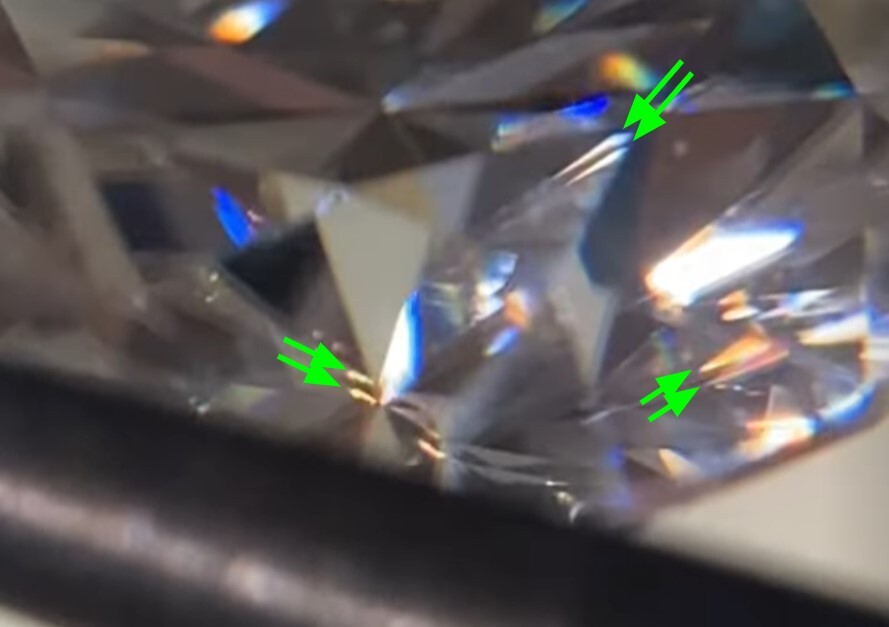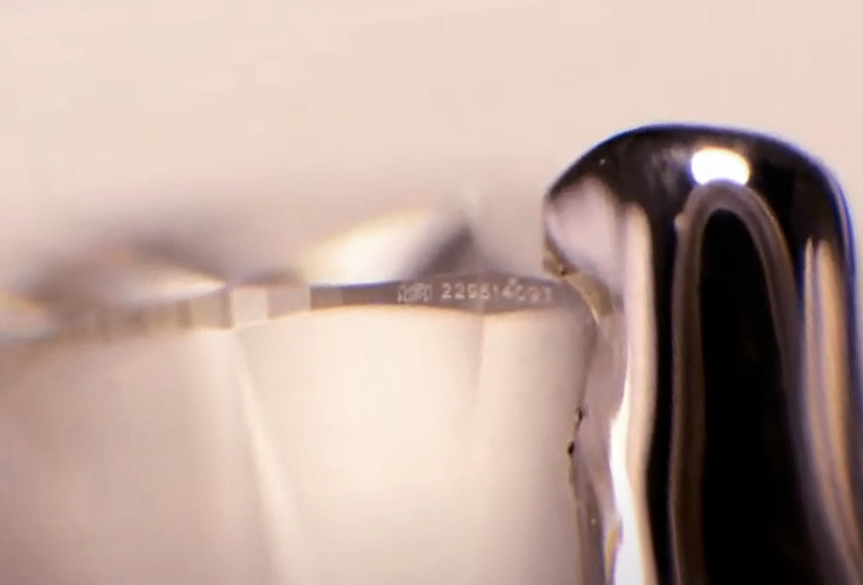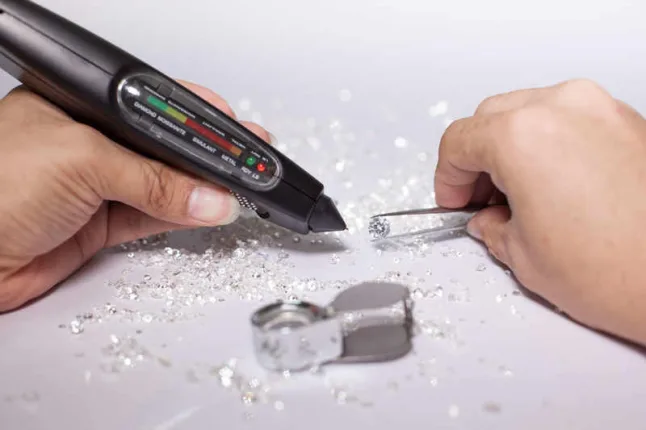- Advanced lab diamond testing helps differentiate diamonds from moissanite
- Moissanite can look similar but has different properties, like more fire and double refraction
- Standard pen diamond testers may mistake lab diamonds for moissanite if used incorrectly
- Rare Carat has a strict authenticity processes behind each order to ensure you get what you order
Have you visited a jewelry store with a pen tester, and your lab diamond tested as moissanite? Don’t panic, your lab diamond is most likely authentic. Read on to understand why!
Pen testers sometimes consistently give false positives and false negatives on certain stones, therefore they cannot be solely relied upon for identifying diamonds. Other tests should be conducted on your diamond by a trained gemologist to have the final word.
What is a Diamond Simulant?
A diamond simulant is a stone that looks similar to a diamond. The most popular simulants are Cubic Zirconia (CZ) which has been commercially sold since the 70s, and Moissanite since the 90s.
While these types of stones can have a similar look, and sometimes similar physical properties, their composition is entirely different: diamonds are made of carbon (with some levels of impurities), moissanite of silicon carbide, and cubic zirconia of zirconium dioxide.
What is a Pen Tester?
A pen tester is a handheld device that measures the heat conductivity or electrical conductivity of a stone, in order to attempt to guess the nature of the stone.
Heat conductivity is the ability of a material to conduct heat. Diamonds usually have exceptionally high heat conductivity, but it depends on the impurities of each individual diamond. Heat conductivity is useful to tell a diamond from a Cubic Zirconia, but not so much to tell a diamond from a moissanite, as those can be similar. So when moissanite started to be sold in the late 90s, it started fooling the pen testers that solely relied on heat conductivity.
More modern pen testers rely on electrical conductivity, which is the ability of a material to conduct electricity. Diamonds usually have very low electrical conductivity, and moissanite is a better conductor. So conductivity is often useful to tell one from the other, but there are exceptions.
In What Cases can a Pen Tester be Wrong?
- Some natural blue diamonds conduct electricity due to the presence of the mineral boron (this is also what gives them their blue color) and are thus misidentified as “Moissanite” by the diamond testers. One famous example is the Hope Diamond, a 45 carat blue diamond extracted in the 17th century and currently housed in the National Museum of Natural History in Washington D.C.
- Some lab grown diamonds can have traces of uncompensated boron which makes the diamond act as a conductor, again misidentified as “Moissanite”.
What are the Other Ways of Testing a Diamond?
First, make sure that the professional writing the appraisal has had some proper gemology training. A retailer doesn't need any training to be allowed to write appraisals! The reference diploma in the United States is from the Gemological Institute of America. We recommend using the lookup tool from the National Association of Jewelry Appraisers or the American Gem Society to find a competent and qualified appraiser near you. Both are reputable trade associations with very high standards.
Here are alternative tests that a competent appraiser can run when in doubt about the accuracy of a pen tester reading:
- The simplest way a professional can distinguish diamond from moissanite is to check for optical double refraction (aka. birefringence or doubling) under 10x magnification. Double refraction is an optical doubling which is always found in moissanite, but never in diamonds. The doubling is not visible from the table of the stone (the top of the stone), but can be seen from any crown facet.

- Other tests such as the “pavilion flash”, "see through" and “heft” allow the professional to spot Cubic Zirconia (aka. CZ, another common simulant).
- Your diamond should have an accompanying certificate and is likely laser inscribed in microscopic writing on the girdle with the report number, which the appraiser can see using high power magnification (don’t expect to find this with a magnifying glass). They will also be able to compare your grading report against the weight of your diamond, the measurements of your diamond, and the presence of any signature inclusions that appear on your grading report. This will give the appraiser confidence that your stone is genuine.

- The most advanced testing machine out there is called a spectrometer, which can identify any type of transparent stone. However it is an expensive piece of equipment that most jewelers will not have at their disposal. Grading labs like the GIA, IGI or GCAL rely on this machine.
What are Rare Carat’s Quality Controls?
- Every diamond or diamond ring that we ship is inspected by a GIA graduate gemologist to ensure with certainty that (i) it is real and (ii) it is the specific diamond you ordered and it corresponds to the diamond certificate
- It is worth noting that most diamonds have their certificate number laser inscribed on the girdle (not visible with the naked eye). We double check it using a microscope, in addition to the standard controls.
- All orders are packed under a camera for an extra layer of security.
- All packages are insured during shipping until delivered to you and a signature is required for delivery.
What are the Guarantees for our Customers?
Our #1 priority at Rare Carat is customer satisfaction, so please call or chat with us on the site if you have any doubts about your diamond. We can help you find a professional, local appraiser to help you feel confident about the genuine nature of the diamond you have purchased. In some cases, we can even help you send the stone back to the certification agency in question for confirmation. If re-testing your diamond with other testing methods doesn’t give you peace of mind, please refer to our return and exchange policy.

